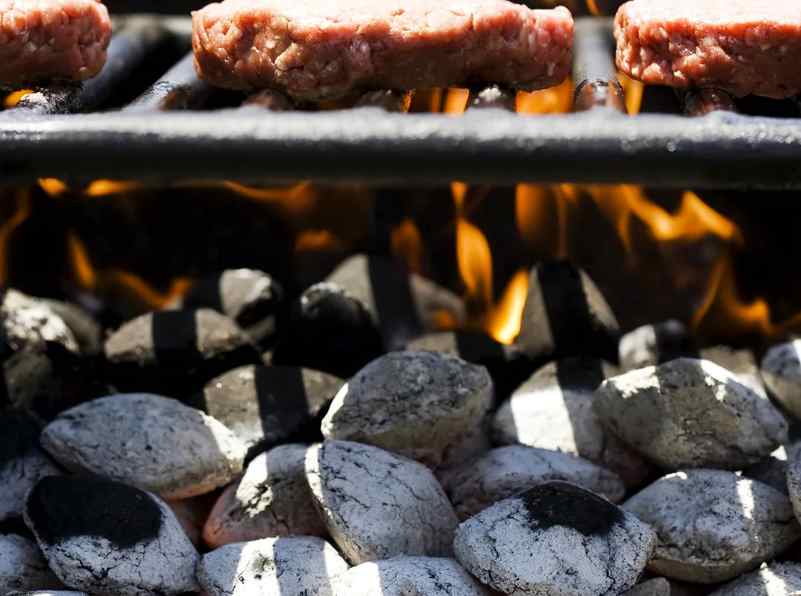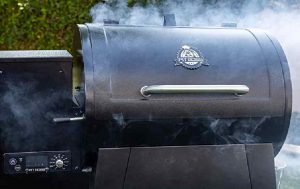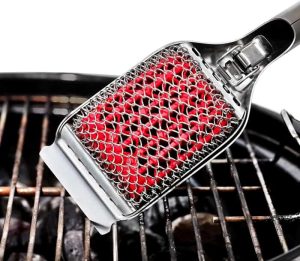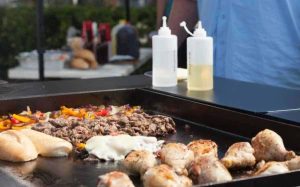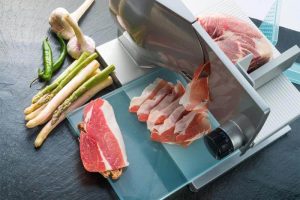So, you’ve got yourself a pellet grill, but your taste buds are hankering for that authentic charcoal flavor.
Can you really use charcoal in your pellet grill? This article is here to break down the pros and cons of this idea, as well as introduce you to some clever ways to get that irresistible smoky taste you’re after.
- Can You Use Charcoal in a Pellet Grill? Exploring the Possibilities
- When To Avoid Using Charcoal In A Pellet Grill?
- Is It Safe to Use Charcoal in the Drum of Your Pellet Grill?
- Pellet Grill vs Charcoal Grill Pros and Cons
- What Are Charcoal Pellets and How to Use Them in a Pellet Grill/Smoker
- Cooking with Charcoal Pellets: Tips and Tricks for Successful Grilling
Can You Use Charcoal in a Pellet Grill? Exploring the Possibilities
Pellet grills are known for their convenience and precise temperature control, but many people wonder if they can use charcoal in these grills for that traditional smoky flavor.
While it may be technically possible to use charcoal in a pellet grill, doing so is not recommended due to several reasons.
First and foremost, pellet grills are specifically designed for pellet use only.
Attempting to use charcoal briquettes or lumps could damage the grill’s auger system and potentially void your warranty.
Moreover, charcoal chunks come in various shapes and sizes, making temperature control more challenging compared to the uniformity of pellets.
Another significant concern when using charcoal in a pellet grill is the potential build-up of carbon monoxide, which can be dangerous and negatively impact the taste of your food.
Additionally, charcoal burns at much higher temperatures than pellets, which could result in temperatures exceeding your grill’s safety ratings and potentially damaging the grill’s metal components.
Fortunately, there is an alternative for those who desire that smoky charcoal flavor without risking damage to their pellet grill.
Charcoal-infused pellets are now available, allowing you to enjoy the best of both worlds. These pellets provide the consistent temperature control you expect from a pellet grill while infusing your food with that classic charcoal taste.
While it might be tempting to try using charcoal in your pellet grill, it is highly discouraged due to the potential risks and complications.
Instead, opt for charcoal-infused pellets to achieve the desired flavor without jeopardizing the integrity of your pellet grill.
When to Avoid Using Charcoal in a Pellet Grill?
It is not recommended to use charcoal as the primary fuel source in a pellet grill.
Pellet grills operate at lower temperatures compared to traditional charcoal grills, and using charcoal exclusively could lead to overcooking or even a fire hazard.
While pellets typically burn at temperatures below 500 degrees Fahrenheit, charcoal can reach temperatures of over 800 degrees Fahrenheit.
Pellet grills are specifically designed for low and slow cooking. If you desire a high-heat grilling experience, using charcoal in your pellet grill is not the best choice.
Pellet Grills Depend on Pellets for Fuel Pellet grills is designed to use pellets as their fuel source. Filling your pellet grill hopper with charcoal is not advisable.
The hopper and auger system is engineered to accommodate and transport small pellets, not large chunks of grilling charcoal.
Attempting to use charcoal in your pellet grill’s feeding system will likely cause clogs and could result in significant damage to your pellet grill.
Is It Safe to Use Charcoal in the Drum of Your Pellet Grill?
Proceed with Caution While using charcoal in your pellet grill may not be the most efficient approach if you’re determined to do so, make sure to proceed carefully.
Pellet grills are specifically designed for pellets, and introducing charcoal to the system may risk damaging your grill.
Keep these tips in mind when using charcoal in your pellet grill:
1. Ensure adequate fuel:
Not using enough charcoal can result in an inconsistent heat source, causing the grill to cool down quickly.
2. Avoid overfilling:
Overloading the grill with charcoal can restrict airflow, leading to a smoldering fire or even extinguishing it completely.
Placing coals too close to the food might cause uneven cooking or burnt food.
Remember, pellet grills are engineered for pellets, not charcoal.
Filling the drum of your pellet grill with charcoal can create a significant ashy mess and may not be suitable for the grill’s design.
The drum is not built to endure the direct heat of hot coals resting at the bottom, which can potentially cause damage to your pellet grill if used repeatedly with charcoal.
Pellet Grill vs Charcoal Grill Pros and Cons
| Grill Type | Pros | Cons |
|---|---|---|
| Pellet Grill | 1. Versatile and easy to use | 1. Designed for low and slow cooking |
| 2. Low maintenance | 2. Longer cook times | |
| 3. Large cooking surface area | ||
| 4. Even heat distribution, no hot spots | ||
| 5. Variety of pellet flavors available | ||
| Charcoal Grill | 1. Easy to use | 1. Requires more steps for setup |
| 2. Burns hot, no need for chimneys or fire starters | 2. Takes time to heat up | |
| 3. Produces unmistakable smoky flavor | ||
| 4. Pellets offer start-to-finish convenience in pellet grills, just ignite burn pot and set temperature | ||
| 5. Variety of pellet flavors available for a smoky taste without the hassle of charcoal |
Related >>25 Pellet Grill Tips and Tricks (Proven Methods)
What Are Charcoal Pellets and How to Use Them in a Pellet Grill/Smoker
Charcoal pellets, much like wood pellets, are small and uniform pellets specifically designed for use in pellet smokers.
However, while wood pellets are made from 100% wood, charcoal pellets are typically made from either 100% charcoal or a blend of wood and charcoal.
The ratio of wood to charcoal varies depending on the brand, so it’s essential to know your preferences before purchasing.
Charcoal is created through a process called carbonization, where wood is heated to over 750 degrees Fahrenheit in a low-oxygen environment, causing it to partially burn.
During this process, volatiles and moisture within the wood are burnt off, resulting in a purer form of carbon fuel that’s bone dry.
Charcoal pellets, like those made by Royal Oak, are produced from oak lump charcoal and contain no chemicals or additives.
The percentage of wood to charcoal in the pellets determines the intensity of the charcoal flavor imparted into your food and how fast the fuel burns.
A higher charcoal content in the pellet provides a higher cooking temperature and a more intense flavor, while a higher wood content offers a longer cook time.
Charcoal pellets are an ideal choice for those who don’t have access to a charcoal grill but still want to enjoy that smoky flavor and higher cooking temperatures.
To use charcoal pellets in your pellet grill, simply follow the manufacturer’s instructions for loading and burning the pellets.
Keep in mind that different grills and smokers may have specific guidelines or requirements, so always consult your grill’s manual for the best results.
Charcoal pellets are a versatile fuel source for those who want to enjoy the benefits of charcoal grilling without the need for a dedicated charcoal grill.
They offer a unique flavor profile and higher cooking temperatures while still providing the consistent heat and ease of use associated with pellet grills.
Cooking with Charcoal Pellets: Tips and Tricks for Successful Grilling
Cooking with charcoal pellets has some similarities to using regular wood pellets, but there are key differences to consider.
Keep these tips in mind when experimenting with charcoal pellets for the first time:
1. Be mindful of the faster burn rate and higher temperatures of charcoal pellets, as they may not be the best choice for low and slow cooking.
2. Charcoal pellets are waterproof, so you can confidently store them in the hopper without worrying about the weather damaging your supply.
3. The higher temperatures achieved with charcoal pellets make searing meats a breeze.
4. Experiment with various blend percentages of wood and charcoal pellets to customize the flavor profile and temperature of your cooking.
Related >> How to Get More Smoke Flavor From Your Pellet Grill (7 Tips)
5. Don’t hesitate to try different brands of pellets to discover the ideal flavor profile and burn rate for your needs.
6. Make the most of your pellet grill by utilizing its versatility for baking, grilling, smoking, searing, roasting, and more.
Final Thoughts
It’s important to note that using charcoal in a pellet grill is generally not advised due to the possible harm and safety issues it can cause.
But don’t worry, there are inventive alternatives, like charcoal-infused pellets, that can deliver that smoky goodness without putting your pellet grill’s performance at risk.
>> Visit our extensive BBQ guides page for more articles that are similar to this one.
Greetings! I’m Chad, a 43-year-old barbecue aficionado hailing from the beautiful state of Texas. I’m thrilled to invite you on a culinary journey as we explore the art of grilling and smoking together. Through this blog, I aim to ignite your passion for barbecue by offering:
Scrumptious, time-honored BBQ recipes passed down through generations, guaranteed to tantalize your taste buds.
Expert guidance on mastering the grill, smoker, and diverse cooking techniques to elevate your barbecue game.
Recommendations on choosing the perfect tools and equipment tailored to your grilling requirements.
An inside look at the latest trends, innovations, and advancements in the ever-evolving world of barbecue.

